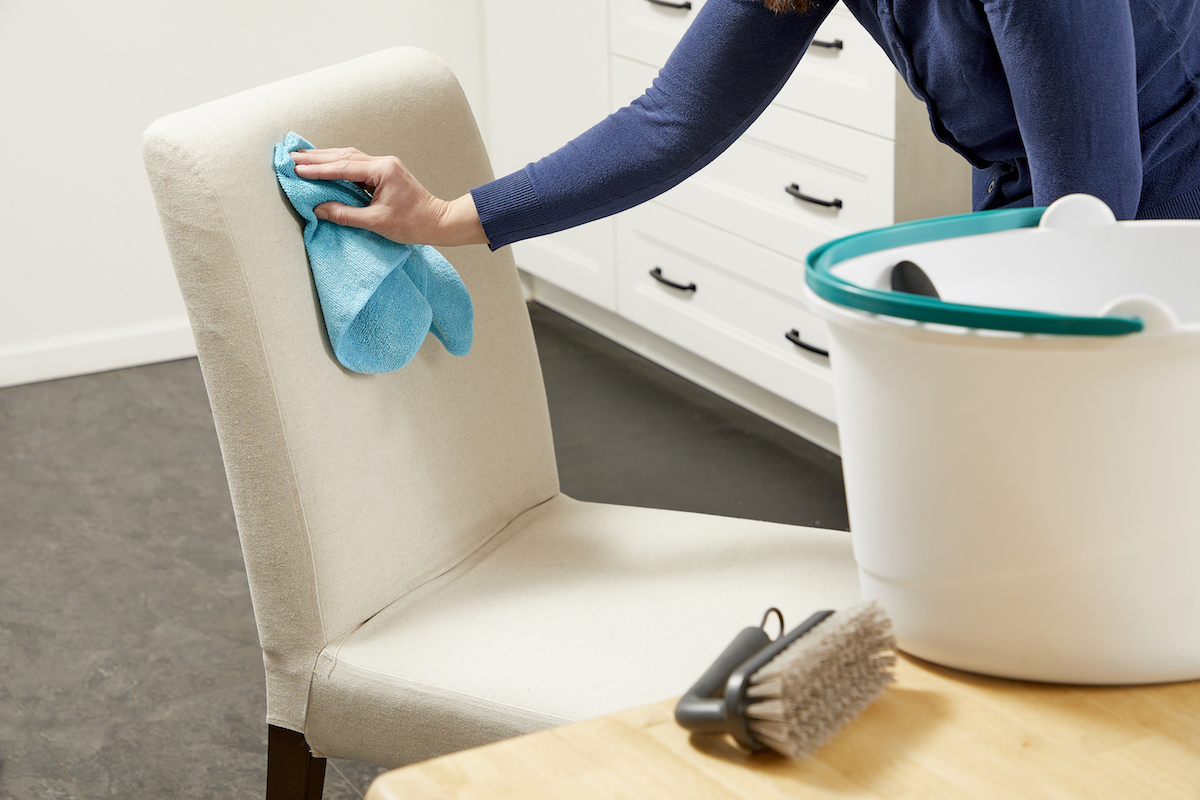

We may earn revenue from the products available on this page and participate in affiliate programs. Learn More ›
Even the most careful among us can get dirt and stains on our furniture upholstery, but store-bought chemicals aren’t the only way out of a stain dilemma. Ready-made upholstery cleaners often contain ingredients you may prefer to keep out of your house, and they can also be expensive or too harsh for some fabrics. Meanwhile, a DIY upholstery cleaner can be made from less abrasive household products. Most of the ingredients, in fact, can be found in the average kitchen.
DIY upholstery cleaners are often inexpensive, safe for pets and kids, and effective on standard stains and upholstery fabrics. Furniture cleaning takes some patience, so be prepared to work gently with the fabric to prevent pilling or damage.
RELATED: The Definitive Guide on How to Clean All Your Furniture
Before You Begin
I recently spent several weeks testing the best upholstery cleaners, which led to a good amount of time focusing on stain removal. The key to getting out a stain is (a) cleaning it as soon as possible, (b) knowing the kind of cleaner that works best on the fabric type, and (c) being gentle and patient.
Before cleaning any furniture upholstery, look for the fabric’s care instructions and cleaning code, which should be on the tag. Follow these instructions to avoid damaging the fabric. The following codes indicate the type of cleaning solutions, including DIY upholstery cleaners, that can be used on the fabric.
W stands for water-based cleaner. These fabrics can be spot cleaned with water-based products. They’re also durable enough to withstand light scrubbing and possibly the suction from an upholstery cleaner. However, be careful not to overload the fabric with water, which can leave water stains.
S fabrics require solvents, meaning they’re dry clean only.
W/S fabrics can be cleaned with either water-based cleaners or dry cleaning solvents.
X-labeled fabrics cannot be cleaned with dry solvents or water. They are vacuum or gentle brush only. However, if the fabric needs more cleaning than a vacuum offers, professional cleaning is the best option.
No matter the code, test a small inconspicuous area of the fabric to see how it responds. Additionally, regular cleaning of the upholstery will make it easier to remove dirt. The sooner dirt and stains are cleaned, the easier they tend to come out.
How to Make Liquid Upholstery Cleaner
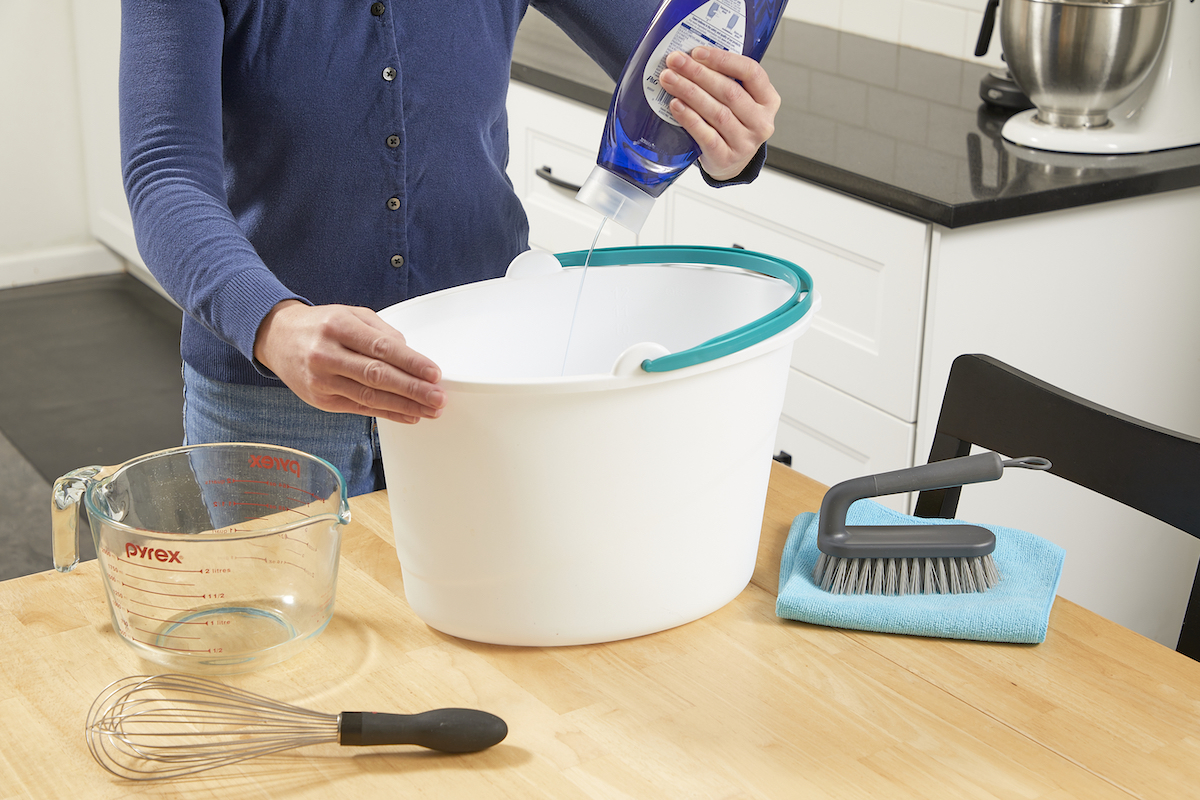
Liquid upholstery or couch cleaner should be applied sparingly. Even fabrics labeled “W” or “W/S” that can handle a liquid cleaner may get water stains with too much water. This DIY cleaner only uses the suds from the mixture to reduce the amount of water on the fabric.
SUPPLIES
Water
Liquid dish soap
Bucket
Hand mixer or whisk
Soft bristled brush or microfiber cloths
Vacuum (optional)
STEPS
1. Mix 4 cups of water with ¼ cup of dishwashing soap in a bucket. Use a hand mixer or whisk to stir the mixture well. The goal is to create a good layer of sudsy bubbles.
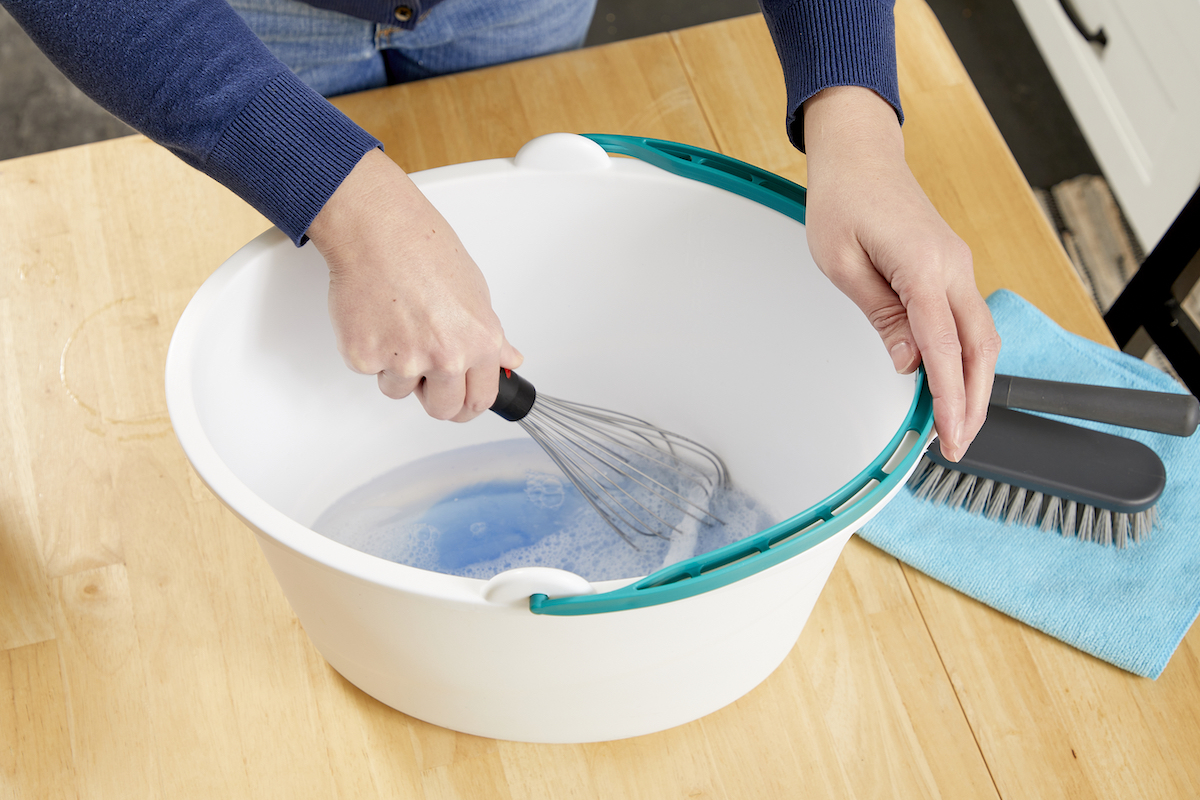
2. Use the brush or soft cloth to load a good amount of bubbles/suds—not water—onto the brush head. Try to minimize the amount of water that makes it way to the fabric.
3. Start at the top of the furniture piece so that if there’s any dripping, the suds won’t reach an area that’s already been cleaned. Gently scrub the solution into the fabric. Frequently rinse the brush or cloth, dry it as completely as possible (or get a new cloth), and reapply suds as needed.
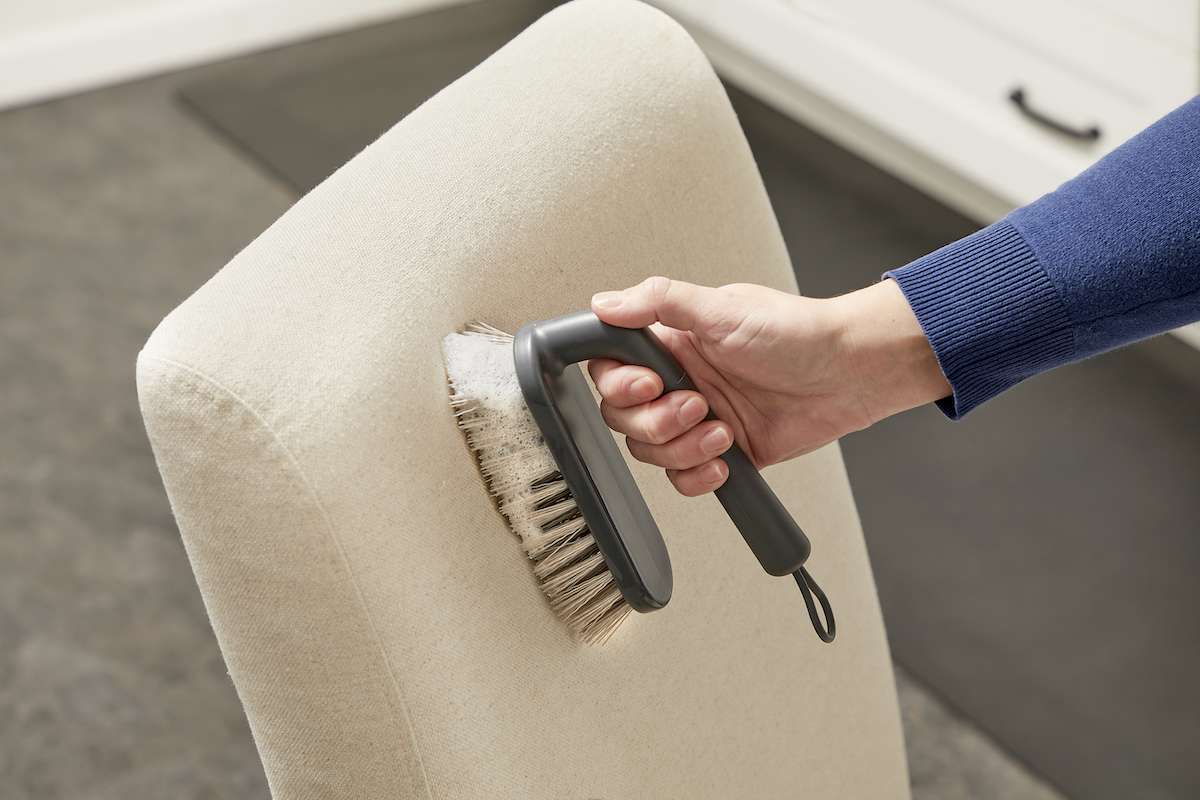
4. After scrubbing the stained area or completing a section of the furniture piece, lightly dampen the second dry cleaning cloth, and use it to wipe the area that’s just been cleaned. Let the area air dry.
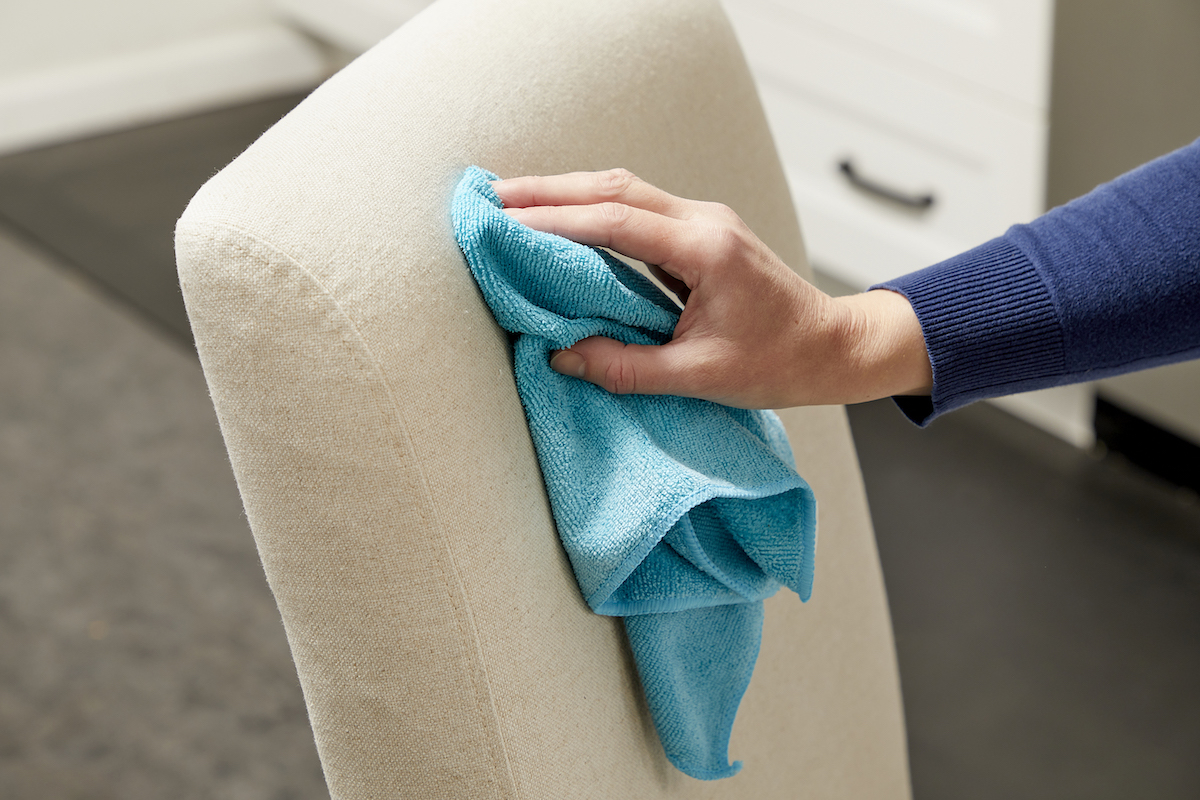
5. Use a vacuum to fluff the fibers if needed.
How to Make Dry Upholstery Cleaner
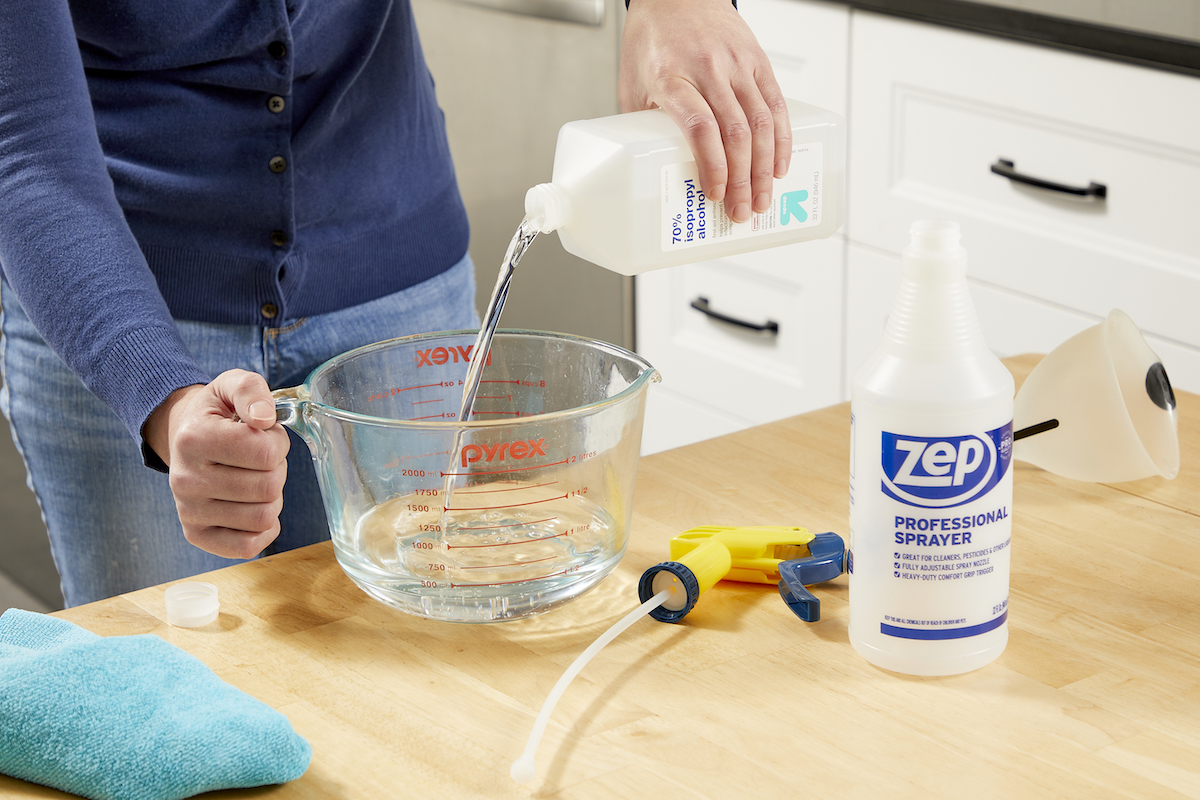
A dry upholstery cleaner can work on many fabrics, including leather (but check the tag just to be sure). This simple cleaning solution, meant for “S” or “W/S” labeled fabrics, evaporates quickly to prevent damage to the fabric. A gentle hand will further protect the fabric from cleaning damage. There’s also an additional step if odors need removal too.
SUPPLIES
Spray bottle
Isopropyl alcohol
Water (if cleaning leather)
Microfiber cleaning cloths
Vacuum (optional)
Baking soda (optional)
STEPS
1. Fill a spray bottle with 2 to 3 cups of isopropyl alcohol, a solvent that loosens stains. (The larger the piece of furniture, the more isopropyl alcohol you’ll need.)
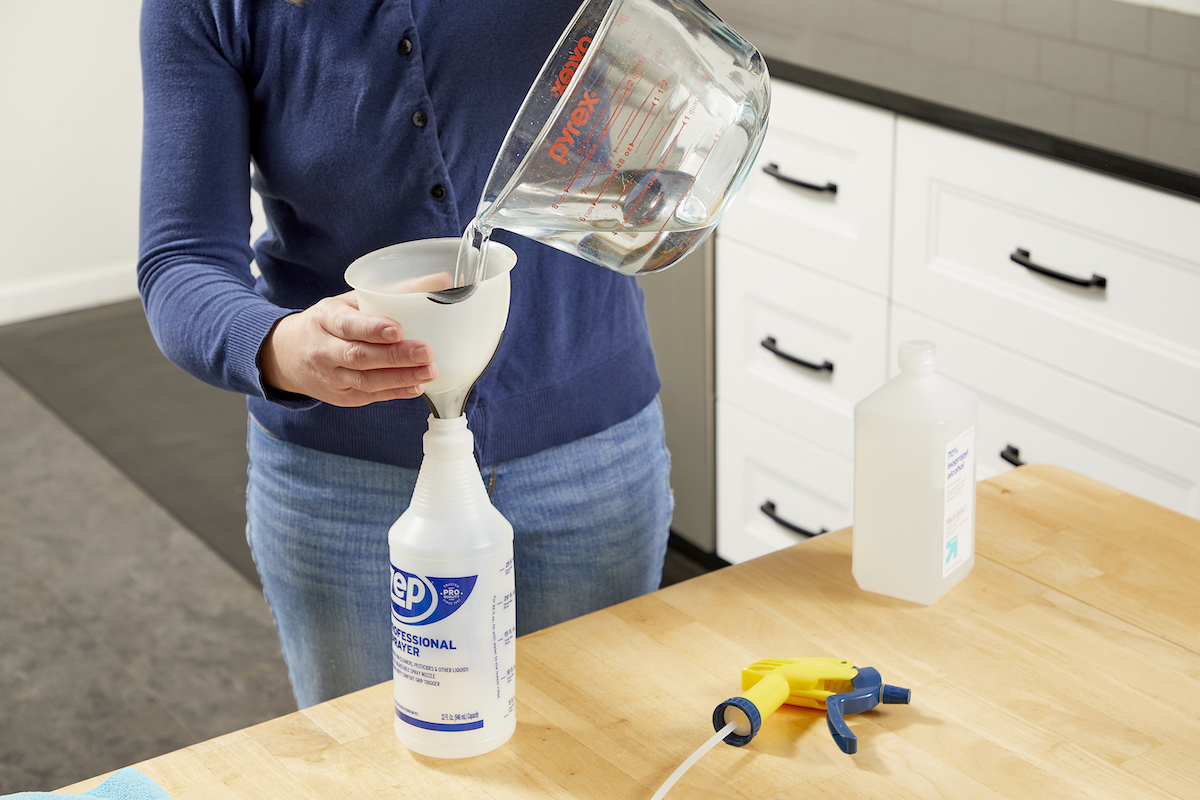
2. Lightly spray a quadrant of the upholstery, and use a microfiber cloth to gently rub the area. You may need to reapply, but apply the minimum amount of alcohol needed to remove dirt. Let the fabric dry completely before using a vacuum to fluff the fibers.
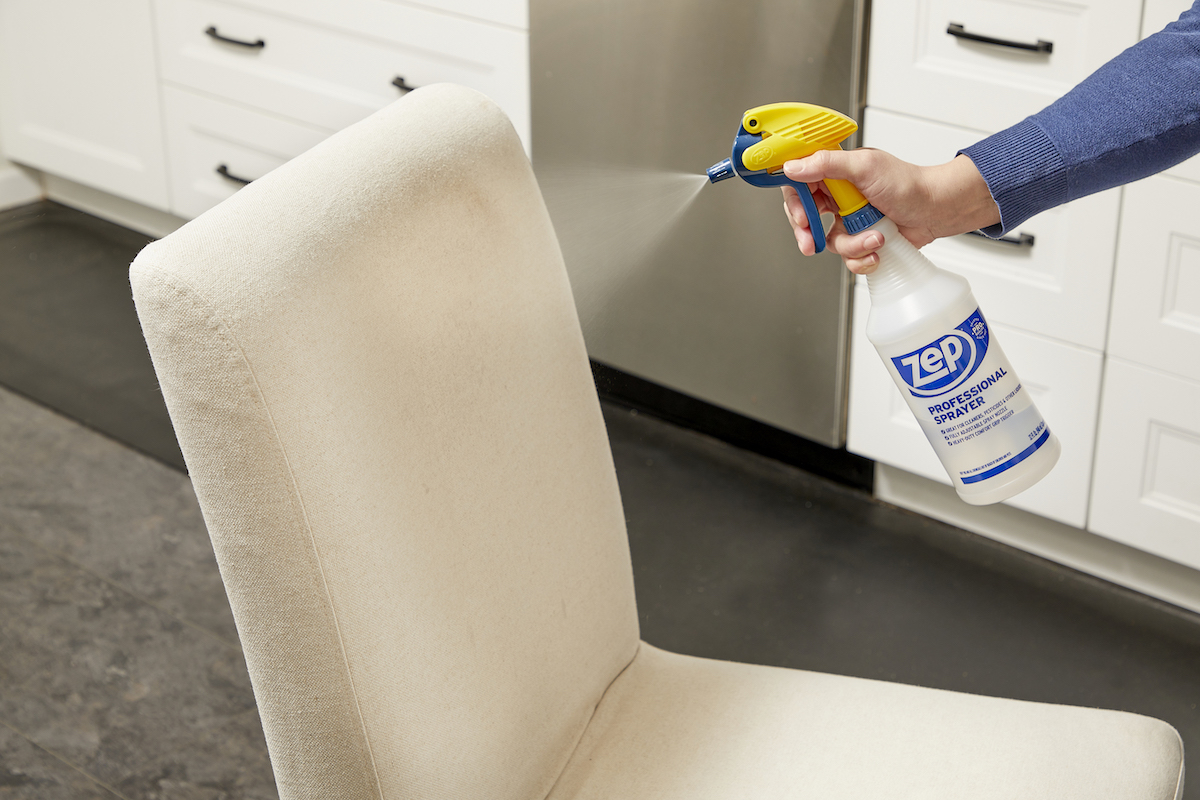
3. If there are odors to address as well, sprinkle baking soda on the fabric to about ¼-inch thick. Let the baking soda sit on the fabric for 30 to 60 minutes.
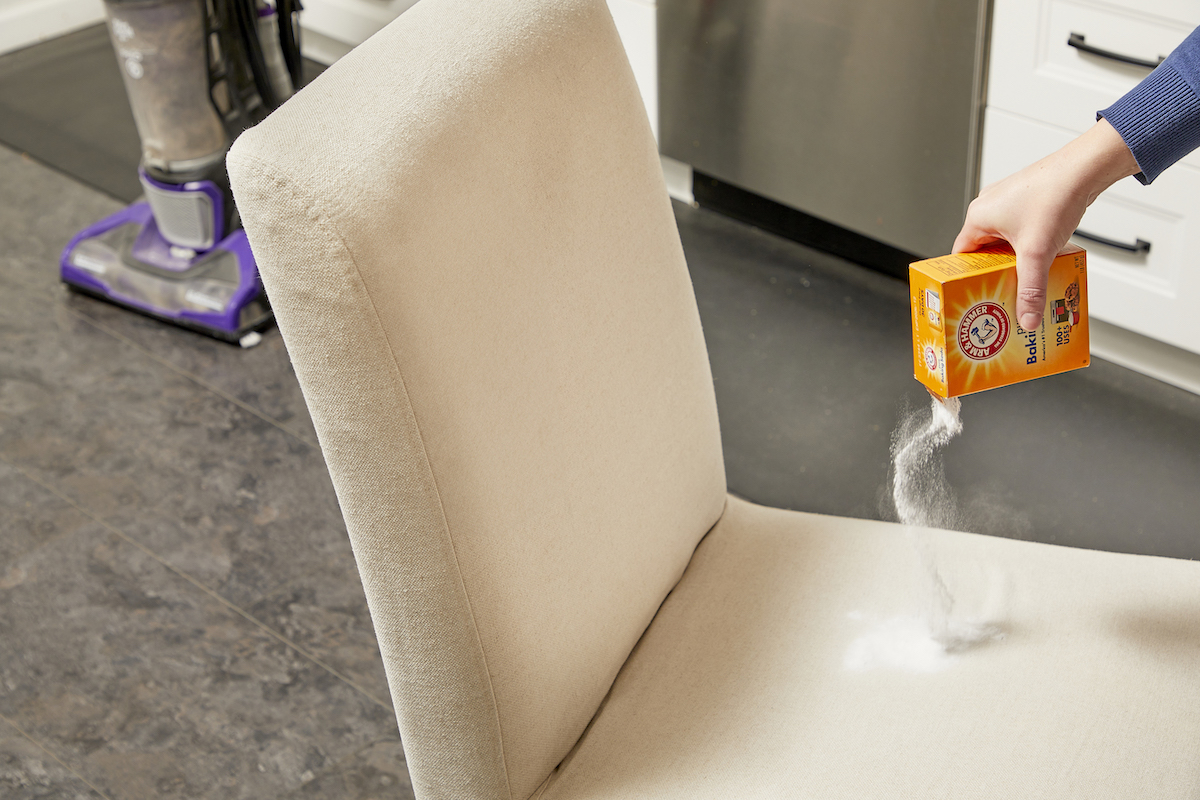
4. Use a vacuum to fully remove the baking soda.
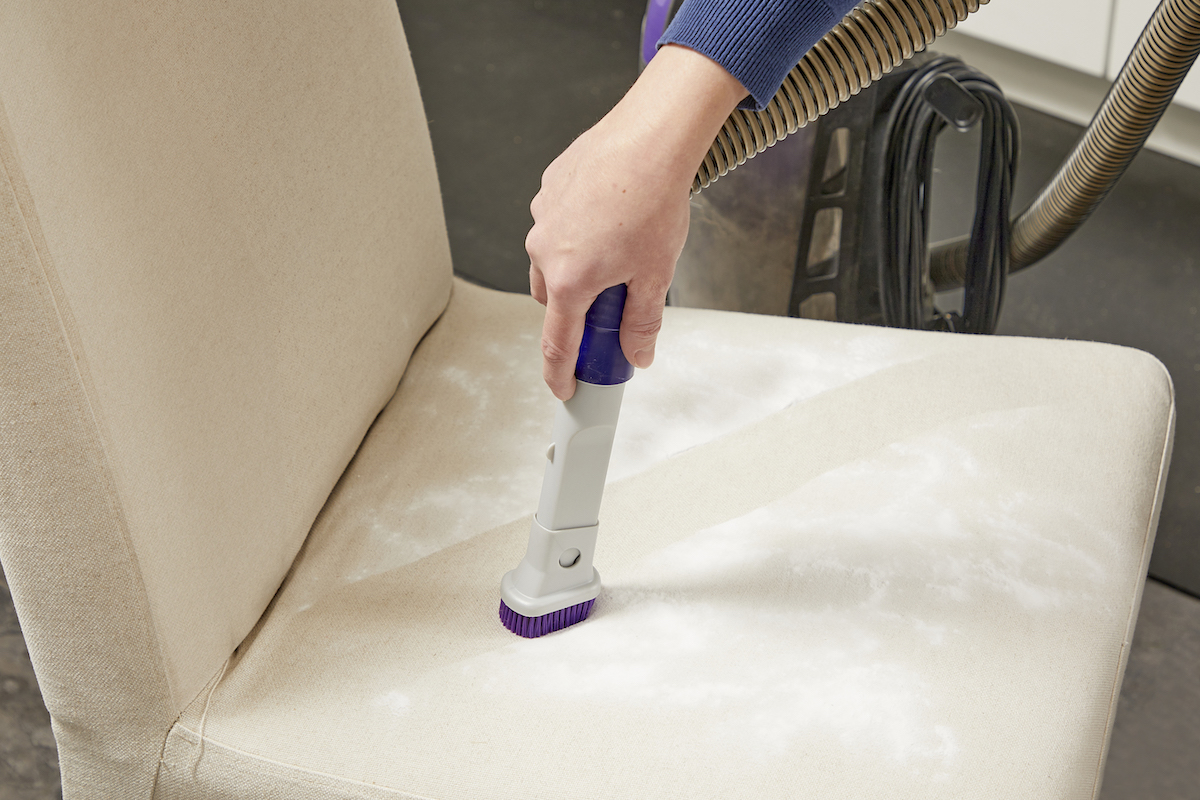
Pro Tip: When cleaning leather, dilute the isopropyl alcohol with water to avoid drying and stripping leather of its top finish. Start with four parts water to one part alcohol to be on the safe side.
RELATED: This Is the Absolute Best Way to Clean a Couch
How to Make Upholstery Stain Remover

General upholstery cleaners have a solvent or surfactant, a substance that helps water penetrate dirt and stains to break up dirt and wash it away. A stain remover does the same thing, except the solvent or surfactant is in a higher concentration to address the higher concentration of the stain-causing substance. This particular mix can double as a DIY car upholstery cleaner too, and it’s meant for “W” or “W/S” labeled fabrics.
SUPPLIES
White vinegar
Isopropyl alcohol
Spray bottle
Microfiber cleaning cloths
Baking soda (optional)
Vacuum (optional)
STEPS
1. Mix 1 cup of white vinegar with 1 cup of isopropyl alcohol by pouring both into a spray bottle. White vinegar is a weak acid that helps break up stains and dissipates odors as it dries. The alcohol is a solvent that further break up stains.

2. Spray the mixture onto a stain and let it soak in for 1 or 2 minutes. Gently dab the stain with the microfiber cleaning cloth, removing as much of the stain as possible. If the stain remains, use the cloth to scrub a bit more vigorously, with the goal of removing the cleaner with as little agitation to the fabric.

3. If odors persist, apply baking soda and leave it on the fabric for 30 to 60 minutes before removing it with a vacuum cleaner.

Final Thoughts
Upholstery cleaning doesn’t require expensive or harsh chemicals. Many kitchen ingredients can pull double duty in DIY upholstery cleaner solutions. They’re often gentle and safe, though they do require time and patience to remove dirt and tough stains.
Be sure to check the labels on the upholstery fabric before applying any type of cleaner. The label indicates the type of cleaners, if any, that are safe to put on the fabric. And, if the fabric cannot tolerate water- or solvent-based products, a vacuum can often do a good job of removing surface dirt.
Finally, clean upholstery regularly to prevent surface dirt from working its way into the fabric fibers. Cleaning stains right away reduces their chances of setting in, so don’t delay.
